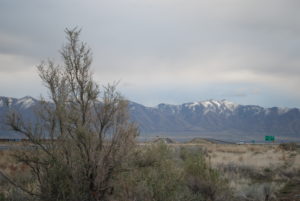noJust to jot down some ideas for the virtual record version of my brain – I’ve been thinking about how to use the leftover part of the pomegranate from processing for juice or whole seeds but the thought occurred to me that smaller pomegranates that are less commercially saleable might be part of the harvest. Those could be used whole to make pomegranate extract and save the effort of separating the seeds from the peel.
Regarding climate change – over a few decades or less current prime growing areas are going to become too hot or dry for the current crops or orchards located in the region. Crops can be replanted annually but orchards take a few years at least to get mature crop harvests. Pomegranate trees are incredibly long lived and can survive 200 years in some conditions. They are particular in the growing season needs though. A cold winter and a very long summer that gets some water on the ground but which isn’t frequently wet and misty in the air is ideal. They tend to grow on mountains. There are smaller varieties of the fruit than the type seen in markets. More info about varieties:
More information about drought conditions and increase in antioxidant content – antioxidants protect the last as well as protecting us –
https://www.npr.org/sections/thesalt/2014/10/23/357909950/why-cal ifornias-drought-stressed-fruit-may-be-better-for-you
ifornias-drought-stressed-fruit-may-be-better-for-you
Looking at the ten or twenty year plan could make now a good time to try to get some pomegranate trees established in areas that currently aren’t ideal but which might have longer, drier summers in a decade or two. Shorter summers simply produce smaller fruit so if the goal is to use the peel and all then the crop might be useful for pomegranate extract before full sized fruit was able to be grown in the region.
Currently in the US pomegranates are grown in northern California and in Georgia. The Georgia areas are sometimes too wet. Elsewhere, pomegranate are grown in New Zealand where sometimes the summer is too short for ideal harvest conditions. Peru also grows pomegranate for export and I have not seen any information about their growing conditions.
Just a few thoughts to jot down. My own family has farm land in a prime orchard growing area in the midwest where peaches and apricots do well in the current conditions, so I was thinking why not try some pomegranate there? (Short answer to why not, because my dad isn’t interested.)
Disclosure: This information is being provided for educational purposes within the guidelines of Fair Use. While I am a Registered Dietitian it is not intended to provide individualized health care guidance. Please seek an individual health care professional for the purpose of individualized health care guidance. Thanks.
